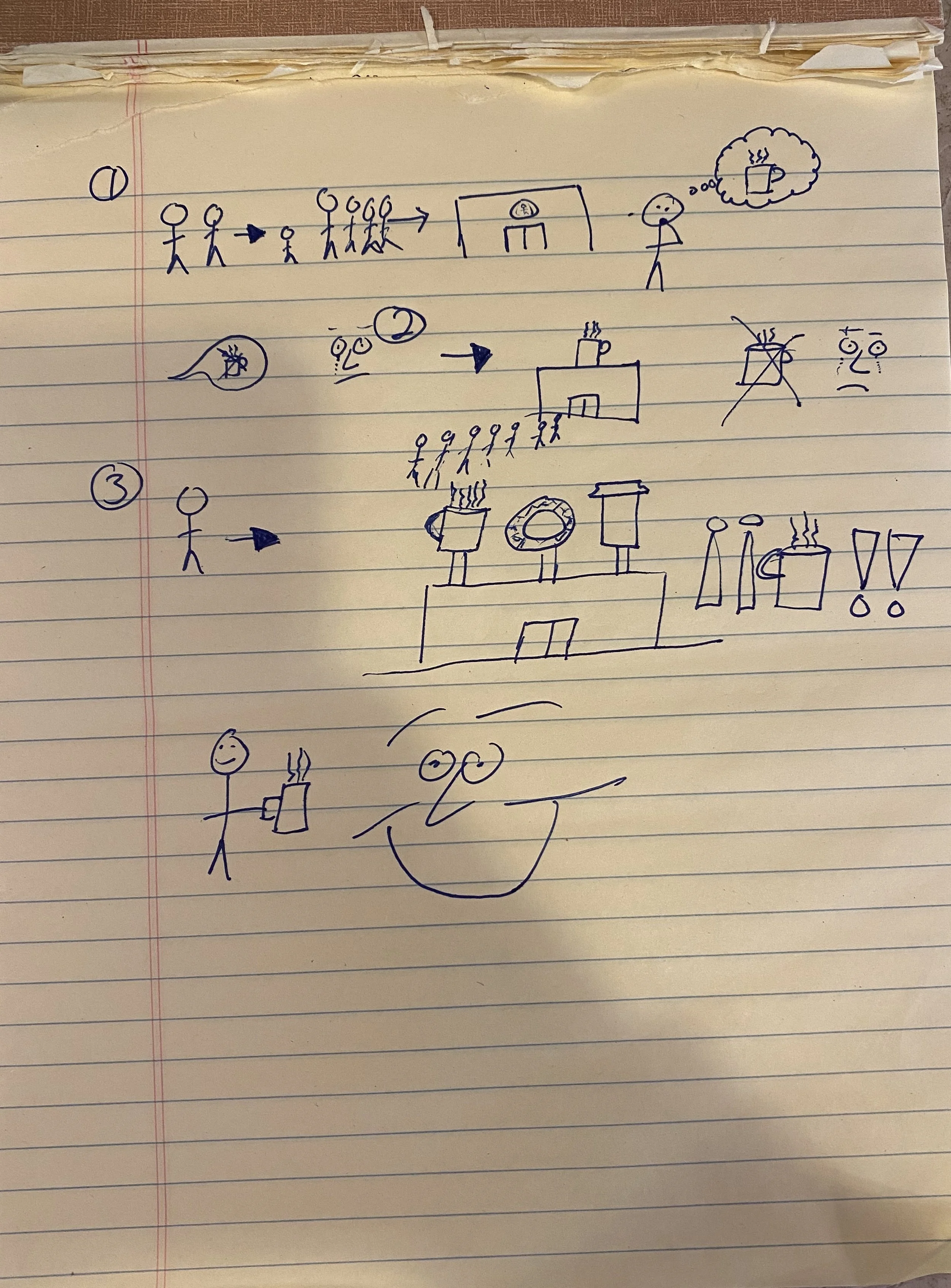Although memorization is not the most efficient long-term strategy for learning a new language, it is crucial in the initial stages. The ultimate goal is to internalize the language to such an extent that you can produce it naturally. When you speak, you should think about what you want to say and just let the language bubble up from your subconscious. When you reach that level of proficiency, you won’t have to rely on memorized language, and this is a huge advantage. After all, you don’t want to sound like a robot with only a few canned phrases at your disposal.
Unfortunately, at the beginning, you likely will not have a strong linguistic foundation to draw upon. When attempting to respond instinctively, your subconscious will have nothing to offer. Even if you understand what the speaker is saying, you’ll reach for the right words to reply, but come up empty.
Enter memorization. Memorizing even just a few key sentences will enable you to make a meaningful response. In essence, memorization takes you from zero to one, from nothing to something, which is by far the most challenging phase of the language acquisition process. It’s also the phase where most learners give up. Getting through the beginning stages of acquisition will unlock your unlimited language potential, and memorization can play a crucial role in that process.
In essence, memorization takes you from zero to one, from nothing to something, which is by far the most challenging phase of the language acquisition process.
- Andrew J. Snider
You won’t be able to memorize the entire language; there’s just too much information to take in. Fortunately, it turns out that not all words and phrases are created equal. Focusing on high-frequency vocabulary will rapidly improve your speaking abilities.
In Spanish, some of the most frequent words are ser to be, estar to be, tener to have, querer to want, ir to go, haber to have, to be, poder to be able, gustar to be pleasing, decir to say, and their various forms. Instead of staring endlessly at verb charts1 void of any context, it’s better to focus your precious attention on a chunk of language that contains this vocabulary in context. As it happens, a story is the perfect vehicle for acquisition because it can hold your attention and contains spaced repetition of high-frequency vocabulary in a natural context.
1 Verb charts aren’t bad, but they are an inefficient use of your time. A native speaker never learned to conjugate "ser" by staring at a verb chart. They acquired it by hearing and reading the various forms in context and interacting with them in some way.
Memorization One Step at a Time
The following memorization process will take about 30 minutes and can yield excellent results. If you repeat this process for two or more consecutive days, your retention will improve even further.
Note: after the first day, you will only need about 10 minutes of study, depending on the length of the story. The first time through is the hardest.
Step 1: select a story
For our purposes, we’ll pick a tale from the stories page of this site (You can find the specific story here). Once you have a story, the next step is to divide the story into pieces. It’s easier to remember information in small chunks. For example, you could split the story into a beginning, a middle, and an end.
In the remaining steps, you’ll see the story split up into one possible set of chunks.
Step 2: Create hand-drawn picture notes
Engaging multiple senses is beneficial for long-term memory retention. In this context, you are incorporating visual and kinesthetic (touch) elements into your study routine. By visualizing the events of the story, you eliminate the need to memorize their sequence and instead focus on how to articulate them in Spanish.
Creating picture notes prior to your study session serves as a preliminary review of the story. You establish connections between the text and the drawings you create. Drawing pictures, akin to using gestures, connects the meaning of Spanish words to your illustrations, thereby enhancing long-term memory.
The quality of the drawings is not important, but they should be hand-drawn by you for maximum effect. Below is an example of a set of picture notes.
These picture notes tell a story from one of my classes. It’s been years since I told this story, but the pictures I drew by hand immediately jog my memory. The story outlined above is a tragedy turned comedy.
Step 3: study the beginning of the story
Part I: Beginning
Hola, me llamo Yaqui (Jackie). Soy una mujer alta. También soy inteligente y joven. Tengo veintitrés años. Soy de San Juan, Puerto Rico. Es la capital del país. Vivo con mi hermana en una casa. Algún día, quiero ser astronauta. Por eso estudio en la universidad. Este cuatrimestre, tomo cuatro clases que son la química, la física cuántica, la astrofísica y la astronomía. Las cuatro son muy difíciles y a veces me siento un poco agobiada.
Read the beginning of the story a few times. Read it until you feel comfortable remembering most or all of the details from this chunk. Focus on the beginning of the story until you feel comfortable.
Once you feel like you have a solid grasp on the story, or have studied for ten minutes (whichever comes first), you should attempt to retell the beginning out loud and from memory. You may use your picture notes for assistance.
If you get stuck, refer back to the story text, but try to rely on it as little as possible. The less you rely on the text, the better your retention will be.
Before you continue with the middle of the story, assess your performance honestly. If you struggled or needed to look at the story, study a bit more and repeat the process. Don’t move on until you nail this section.
Step 4: Study the middle of the story
Part II: Middle
Son dos de la madrugada y estoy en mi casa. Estoy nerviosa porque tengo cuatro pruebas difíciles por la mañana. No quiero tomar las pruebas. Pienso: «Ay, ay, ay. Hoy tengo cuatro pruebas difíciles. No quiero tomar las pruebas. Necesito inventarme una excusa.»
Now we move on to the next chunk of the story. You can expect to spend another 10 minutes on this section, so make sure you have time before you start.
Just like in the first section, we want to isolate Part II of the story. Study the middle chunk on its own. Once you feel comfortable, try to retell just this section of the story. Again, you may use your picture notes for support. Refer back to the text of the story only if absolutely necessary.
Evaluate your performance honestly. If you found it challenging or had to consult the story, study a bit more and repeat the process for the middle section.
Before you move on, try to combine the beginning and middle sections of the story. Retell both parts out loud and use only your picture notes as a guide.
How did you do? You probably found that the first section wasn’t as memorized as you thought it was. Study both sections again until you can retell them smoothly.
step 5: Study The Ending of the story
Part III: Ending
Entonces pienso en una buena excusa. Pienso que es una muy buena excusa. Escribo un mensaje para mi profesor.
Hola, profesor. Entiendo que tenemos una prueba importante hoy. No puedo ir a clase porque mi casa está en fuego. Por eso puedo tomar la prueba. Gracias por entender mi situación.
Con mucho respeto,
Yaqui de la Fabricación
Now that parts one and two are under your belt, focus your attention on the ending section of the story.
After a few minutes of study, try to retell just the ending section out loud and from memory. Again, use only your picture notes for support. Only refer back to the text if you absolutely cannot remember what to say.
How did you do? Assess your performance honestly. If you struggled your way through, study a bit more and repeat the process.
Once you're comfortable with the ending of the story, try combining all three sections.
You’ll probably find that the beginning is pretty good at this point, but maybe there are some struggles in the middle section. Refine any trouble areas and try to retell the whole together again.
Step 6: take a break, then repeat
Taking a break is one of the best things you can do when you are learning a new language. There is so much new information to take in, and taking a break gives your brain time to catch up. Even while you’re not thinking about it, your brain takes the information you studied, processes it, and readies it for acquisition.
I recommend the break to be a minimum of two hours, but it’s also fine if you come back the next day. Any break lasting more than 24 hours will lead to decreased retention, so don’t put it off for too long.
After your break of two to 24 hours, try to retell the story again, using only your picture notes as a crutch.
I’m willing to bet that you’ll be amazed at how well you were able to memorize an entire story in Spanish.
You Also might like
Discover the Joy of Spanish Through Storytelling
Crafted from over a decade of innovative teaching experience, this book offers a fresh and engaging approach to acquiring Spanish. Dive into stories that are not just educational but also entertaining, humorous, and sometimes outright absurd.



